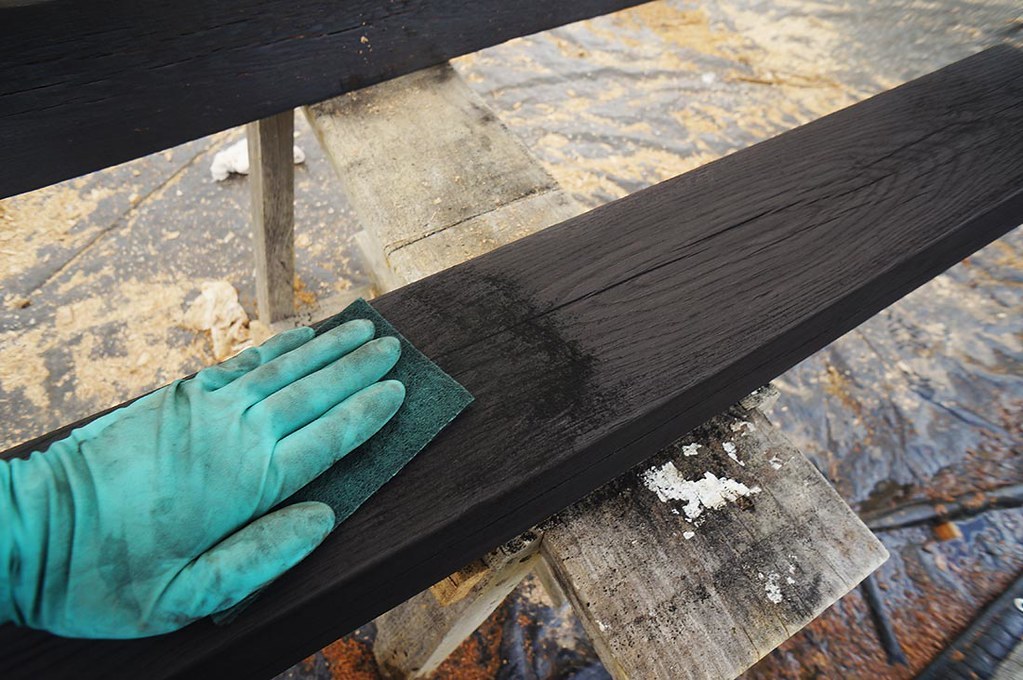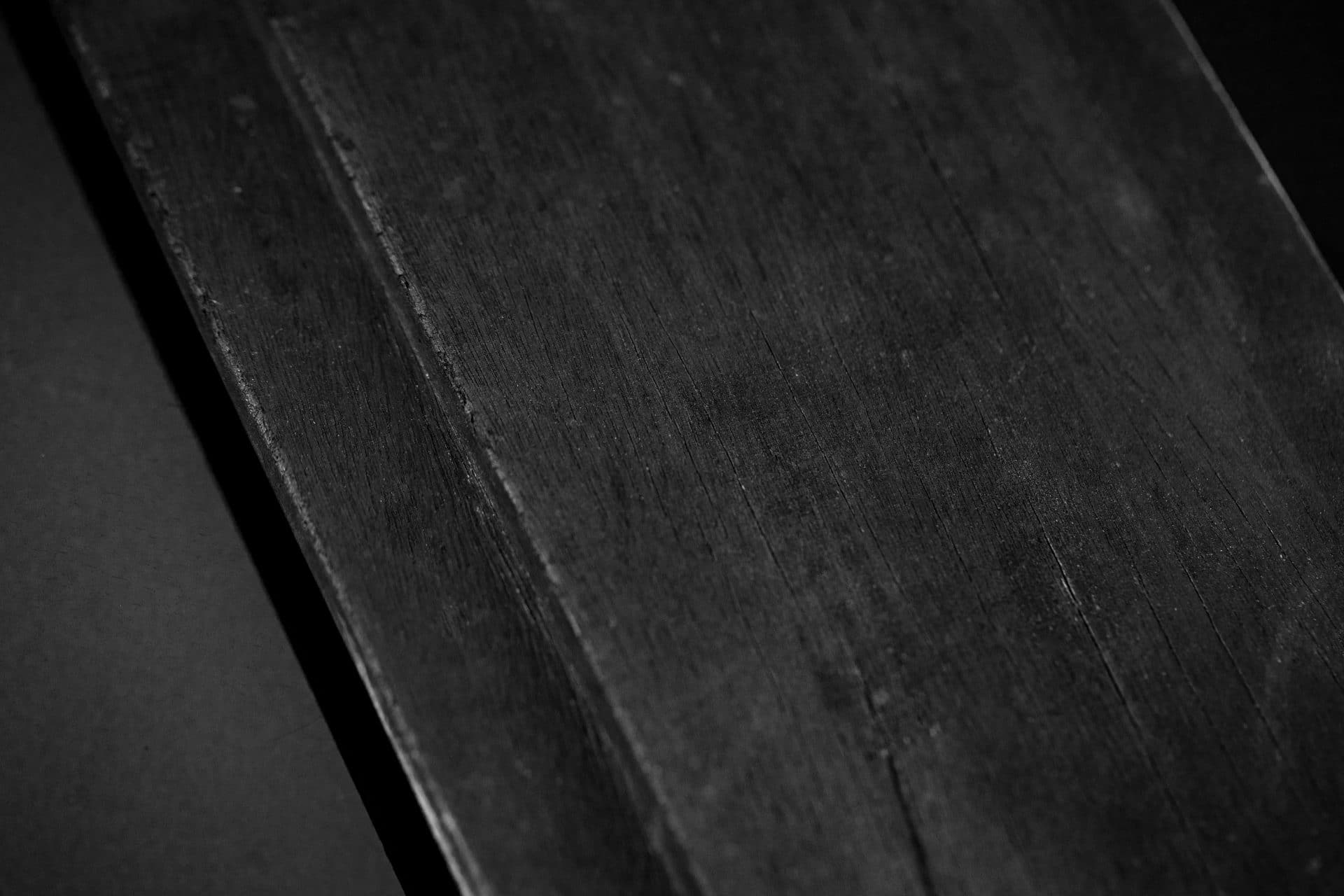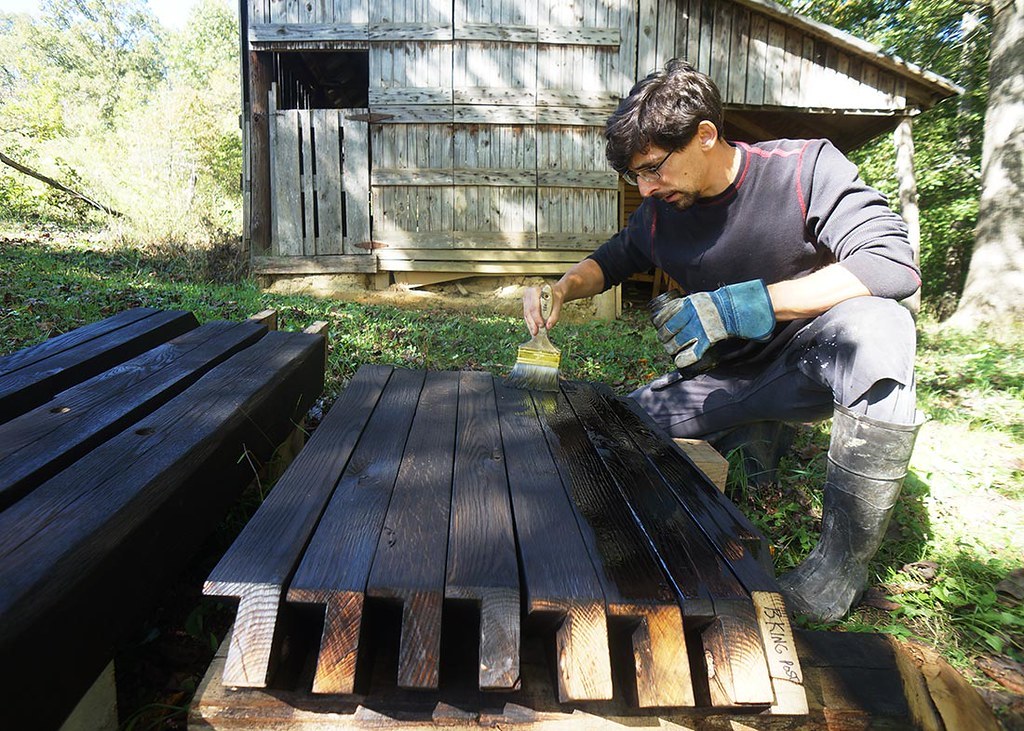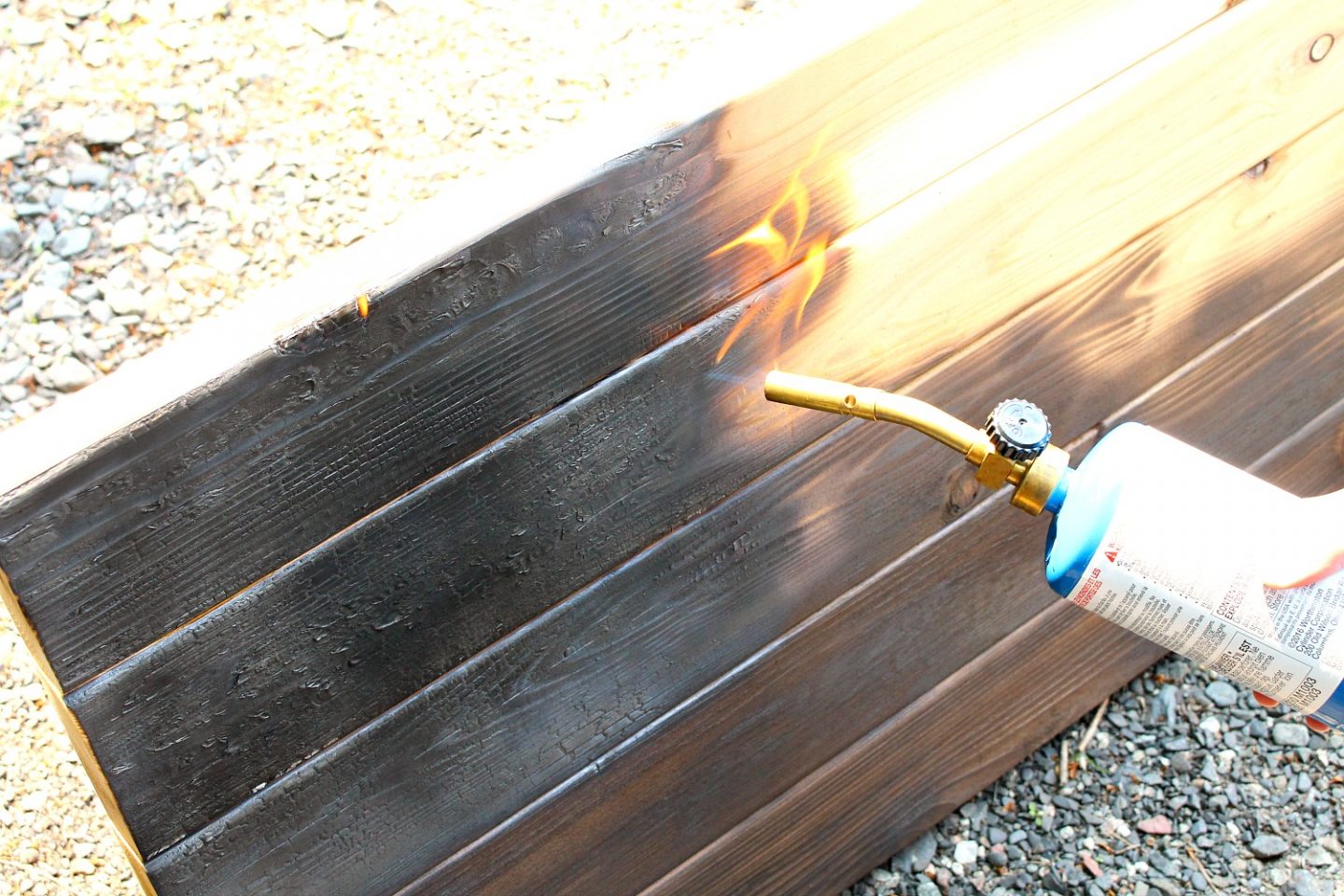
Why you should use charred wood in your next project Cottage Life
Roger takes a look at the ancient technique of charring wood to protect it from the elements.Sponsored by Snickers Workwear: https://www.snickersworkwear.co..

Shou Sugi Ban Japanese wood charring technique WoodPOX
Shou Sugi Ban (焼杉板) is the process of charring wood to preserve it.Originating in Japan during the 18th century, it was a way to make cedar siding weatherproof. The technique has become popular in the West for its aesthetic appeal with the nifty side effect of protecting the wood for up to 50 years.

Our Equipment for Charring Wood South Parry Lumber
The process involves charring the wood surface with exposed flame from a propane torch, then cooling it, cleaning it with a wire brush, rinsing, and then applying a finish coat. Although time-consuming, the final product can have a rich, silvery finish, and the charred wood resists fire, rot, insects, and can last for decades.

Our Equipment for Charring Wood South Parry Lumber
Charring is a chemical process of incomplete combustion of certain solids when subjected to high heat. Heat distillation removes water vapour and volatile organic compounds ( syngas) from the matrix. The residual black carbon material is char, as distinguished from the lighter colored ash.

Shou Sugi Ban Japanese Wood Burning DIY Charred Wood Tutorial Dans le Lakehouse
Wood charring, also known as Shou sugi bun, refers to the method of timber colouring and preservation, which is conducted through applying flames to the surface of the timber planks & boards.

Wood Charring A Definitive Guide [2022] Coach House Timbers
Charring culls the cellulose and hardens the lignin, lowering the wood's thermodynamic conductivity, and ruining the pulp's yumminess for insects. Yes, yumminess. Charring also blocks harmful UV rays from drying, splitting and breaking down the wood. Can You Buy Charred Wood? Yes, some fantastic artisans are creating gorgeous stuff.

[VIDEO] Ancient Japanese Art of Preserving Wood by Charring It Cabin Obsession
Charring timber is an ancient technique used to protect wood from rot and decay. This traditional practice dates back to at least the Bronze Age and is still used today in many parts of the world. By charring timber, you can extend the life of your wood, ensuring it stands the test of time.

013 Charring wood for a finish. Short video on experimenting with the technique. YouTube
Charred Wood is the process of lightly applying an open flame to a wood plank to char the surface of the board. The charred exterior not only helps to weatherproof the siding and act as a deterrent to insects, but it also looks extremely stunning! Shou Sugi Ban is a commonly used variation of the Japanese word Yakisugi.

Shou Sugi Ban Japanese wood charring technique WoodPOX
Here are some creative ways to incorporate charred wood into your interior design projects: 1) Accent walls. An accent wall with charred wood gives an earthy feel and brings a touch of nature inside. The natural color tones of the charred wood work beautifully with any décor style and add depth to a room. 2) Ceilings.

Idea by William Bollinger on Woodworking Projects & Tips Charred wood, Torch wood, Wood
Wood charring is a method of timber coloring and preservation, which involves applying fire to the surface of wooden planks and boards. Charred wood provides a beautiful and rustic feel to any piece of furniture. Aside from its aesthetic capabilities, charring wood results in a stronger and more durable board.

Our Equipment for Charring Wood South Parry Lumber
Instructions: 1) Set the workplace 2) Ready the planks 3) Start the fire 4) Determine the distance and start charring 5) Allow the wood to cool 6) Brushing the planks 7) Oil the planks Conclusion Cracking the Cord of Wood Code: Understanding the Basics and Factors Affecting the Amount of Wood in a Cord

Charring Wood For Preservation — Yakisugi Method YouTube
Synopsis: Christopher Miano shares his method for shou sugi ban, an ancient Japanese technique that preserves wood by charring the surface. He's used it with success on oak, cherry, and walnut. First he does several rounds of charring. Then he cools the wood, adds stain, and finishes with oil. A bronze butterfly key adds an extra touch.

Charring wood YouTube
Shou sugi ban is an ancient Japanese technique for waterproofing and preserving wood. It involves charring the cedar wood surface until it turns black. While shou sugi ban originated for the purpose of weatherproofing wood, it has recently become popular as a rustic, textural design element inside the home.

Shou Sugi Ban Japanese Wood Burning DIY Charred Wood Tutorial Dans le Lakehouse
The charred wood was wire-brushed to remove some of the softer or more burned portions (cellulose) and leaving the harder and less consumed parts (lignin) that altered the texture as well as the color of the wood. Other coloring processes such as stains, glazes and crackle lacquer were often used in conjunction with the charring to give a more.

JawDropping Design Effects of Charred Wood Unveiled by Yaroslav Galant woodworking Charred
Between the charred layer and the unaltered wood is a layer of torrefied wood - super dessicated and very slightly altered. This is the fire-hardened stick stuff of our paleolithic ancestors. The torrefied layer is harder, less absorbent, and more resistant to deformation than charcoal.

How Charring and Toasting Wood Impacts Whiskey Flavor Whisky Advocate
While shou sugi ban (焼杉板) originated in Japan in the 18th century primarily as way to treat cedar siding to make it weatherproof, the technique—which involves charring a wood surface to render.